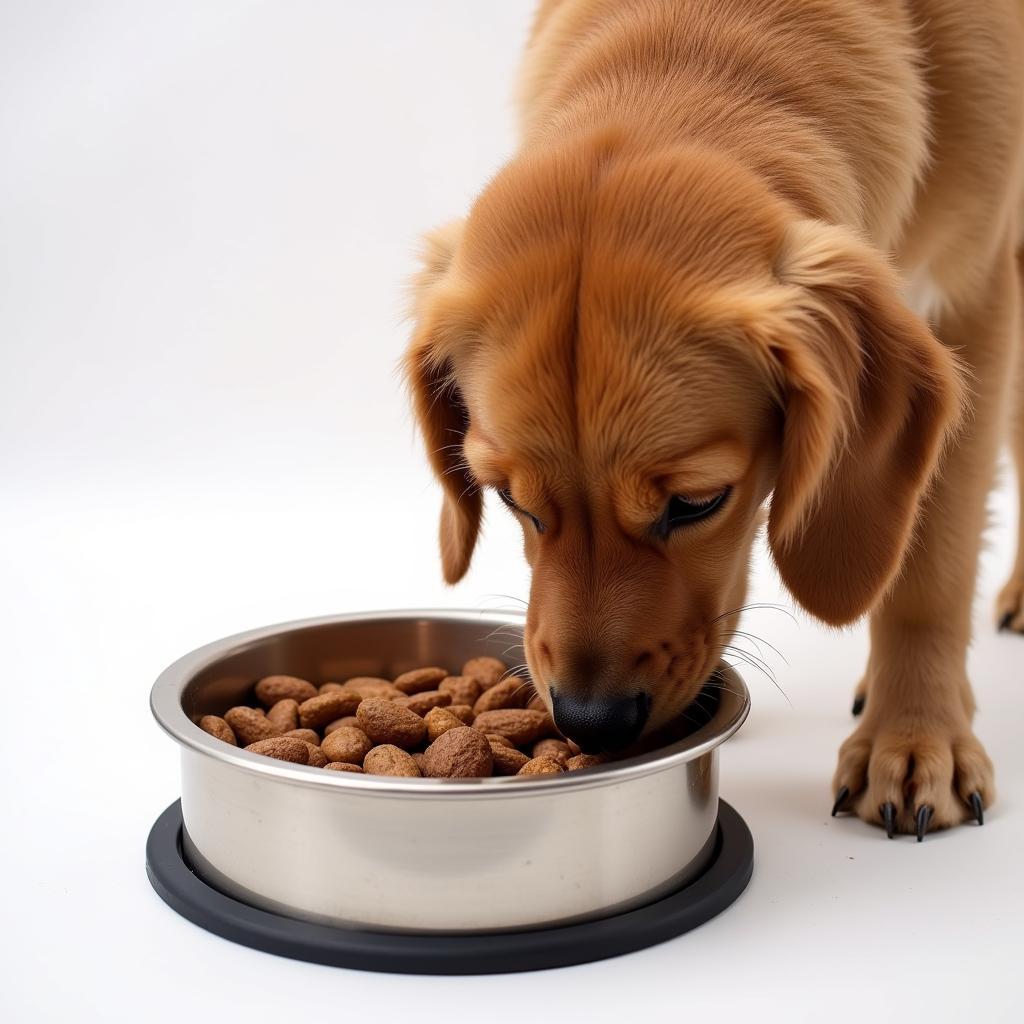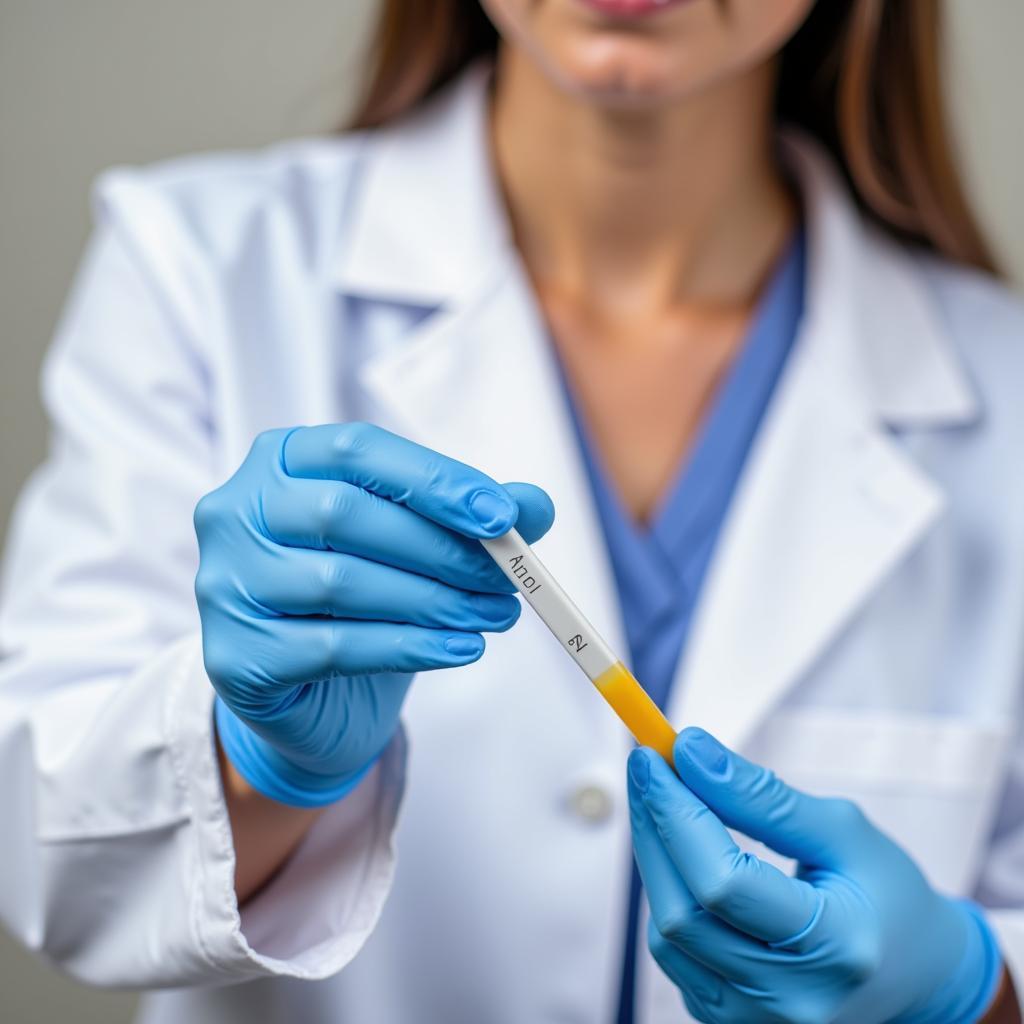Struvite crystals in dogs can be a painful and recurring problem. Understanding which foods to avoid is crucial in managing this condition and ensuring your furry friend stays healthy. This comprehensive guide will delve into the dietary factors contributing to struvite crystal formation and provide a clear list of foods to steer clear of.
Understanding Struvite Crystals and Their Formation
Struvite crystals are a type of urinary crystal that can form in a dog’s bladder. While not always problematic, they can clump together to create larger stones that can cause blockages, infections, and discomfort. Dietary factors play a significant role in struvite formation, particularly the levels of magnesium, phosphorus, and certain minerals in your dog’s food. This is why knowing which foods to avoid is so vital in managing this condition.
The Role of Diet in Struvite Crystal Formation
A diet high in magnesium, phosphorus, and certain minerals can increase the alkalinity of a dog’s urine, making it a more hospitable environment for struvite crystal formation. Certain protein sources can also contribute to this issue. While some dogs are genetically predisposed to developing struvite crystals, dietary management is often the first line of defense.
- Magnesium: This mineral is a key component of struvite crystals. Limiting magnesium intake can significantly reduce the risk of crystal formation.
- Phosphorus: While necessary for healthy bone development, excessive phosphorus can also contribute to struvite crystal formation.
- Protein: Certain types of protein can increase urine alkalinity, promoting crystal growth.
- Water Intake: Ensuring adequate water intake can help dilute urine and reduce the concentration of crystal-forming minerals.
Foods to Avoid for Dogs Prone to Struvite Crystals
Choosing the right food for a dog prone to struvite crystals can be a daunting task. Here’s a breakdown of common culprits to avoid:
- High-Magnesium Foods: These include fish, shellfish, some types of dry dog food, and certain treats. Always check the ingredient list for magnesium content.
- High-Phosphorus Foods: Organ meats, bone meal, and dairy products are often high in phosphorus and should be limited or avoided.
- Foods High in Oxalates: While not directly linked to struvite crystals, oxalates can contribute to other types of urinary stones. Foods high in oxalates include spinach, beets, and sweet potatoes.
- Certain Dry Dog Foods: Some commercially available dry dog foods are formulated with high levels of magnesium and phosphorus for palatability and preservation. Opt for specialized low-magnesium diets designed for struvite management.
- Excessive Treats: Many dog treats, especially those made with meat by-products or bone meal, can be high in magnesium and phosphorus. Limit treats and choose low-magnesium options.
 Dog Eating Struvite-Friendly Food
Dog Eating Struvite-Friendly Food
Choosing the Right Dog Food
Selecting a dog food specifically designed for struvite management is crucial. These diets are formulated with controlled levels of magnesium, phosphorus, and other minerals to help dissolve existing crystals and prevent new ones from forming. Look for phrases like “urinary health” or “struvite dissolution” on the packaging.
What to Feed a Dog with Struvite Crystals
While avoiding certain foods is crucial, providing the right nutrients is equally important. A diet designed for struvite management will typically include:
- Controlled Magnesium and Phosphorus: These minerals are still necessary for overall health but are carefully balanced to prevent crystal formation.
- Increased Water Intake: Encouraging your dog to drink plenty of water helps dilute the urine and flush out potential crystal-forming minerals.
- Therapeutic Diets: These specialized diets are often prescribed by veterinarians and are formulated to dissolve existing struvite crystals and prevent recurrence.
 Veterinarian Examining Dog Urine
Veterinarian Examining Dog Urine
Conclusion
Managing struvite crystals in dogs requires a multifaceted approach, with diet playing a crucial role. By avoiding foods high in magnesium, phosphorus, and certain other minerals, and by choosing a diet specifically formulated for struvite management, you can significantly reduce the risk of recurrence and improve your dog’s overall urinary health. Remember to always consult with your veterinarian for a personalized dietary plan. Struvite crystals in dogs are manageable with the right approach!
FAQ
-
What are the signs of struvite crystals in dogs? Signs can include frequent urination, straining to urinate, blood in the urine, and urinary tract infections.
-
Can struvite crystals be dissolved with diet alone? In many cases, yes. A specialized diet can help dissolve existing crystals and prevent new ones from forming.
-
How long does it take to dissolve struvite crystals with diet? It can take several weeks to months to completely dissolve struvite crystals with dietary changes.
-
Are all dogs equally prone to struvite crystals? No. Some breeds are more predisposed, and females are more likely to develop them than males.
-
Can I give my dog supplements to help with struvite crystals? Only under the guidance of a veterinarian. Some supplements can interact with medications or worsen the condition.
-
What happens if struvite crystals are left untreated? They can grow into larger stones, leading to blockages, infections, and severe discomfort.
-
How can I encourage my dog to drink more water? Try adding water to their food, providing multiple water bowls, or using a pet fountain.
Need more help? Contact us at Phone Number: 02437655121, Email: [email protected] or visit us at 3PGH+8R9, ĐT70A, thôn Trung, Bắc Từ Liêm, Hà Nội, Việt Nam. We have a 24/7 customer support team.